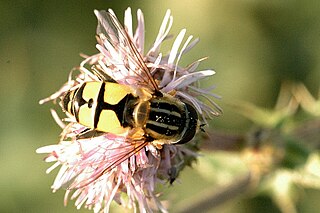
Helophilus hybridus is a hoverfly. It is a Palearctic species.

Leucozona glaucia, the Pale-saddled Leucozona is a Palearctic hoverfly. Larvae feed on ground layer aphids. Adults are usually seen visiting flowers.

Leucozona laternaria is a European species of hoverfly.
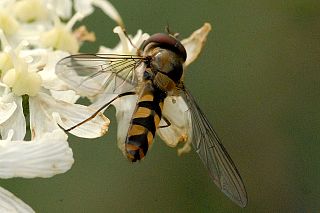
Meliscaeva auricollis is a West Palearctic species of hoverfly.

Meliscaeva cinctella is a Holarctic species of hoverfly.
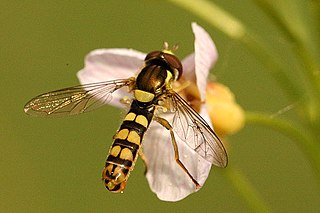
Sphaerophoria interrupta is a Palearctic species of hoverfly.

Xanthandrus comtus is a species of hoverfly. It is found in the Palearctic.

Sericomyia lappona, is a species of hoverfly. It is widespread throughout the Palearctic.

Platycheirus rosarum is a species of hoverfly found in the Palearctic. Like its close relative Platycheirus granditarsus, it can be found in marshy meadows and ditches; indeed, the two species can often be found together. The flight time is between May and October, though it peaks in abundance in June and July.
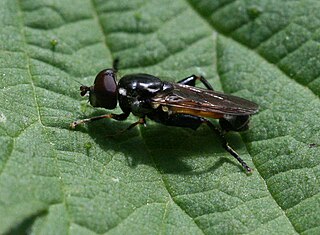
Tropidia scita is a common Palearctic species of hoverfly associated with wetlands, ponds and ditches. The larvae have been recorded living in the basal sheaths of Typha.

Parhelophilus consimilis is a Palearctic hoverfly.

Trichopsomyia flavitarsis is a European species of hoverfly.

Platycheirus ambiguus is a small widespread species of hoverfly found across the Palearctic from Ireland to Japan. A spring species found in flight in April and May, it visits spring-flowering trees and shrubs; e.g., Prunus spinosa in deciduous woodland and scrub.
Platycheirus amplus is a Holarctic species of hoverfly found in wetlands, fens, moorland streams and bogs.

Platycheirus angustatus is a species of hoverfly. It is found in many parts of the Palearctic, and in the Nearctic.

Meligramma guttatum is a Holarctic species of hoverfly.

Epistrophe nitidicollis is a European and North American species of hoverfly.
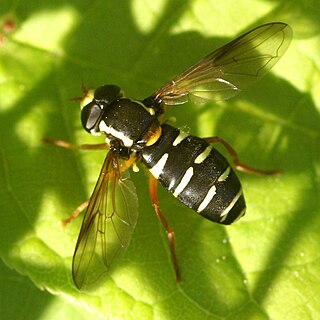
Philhelius citrofasciatus is a species of hoverfly found in grasslands from Ireland to western Siberia. The larvae live in Lasius ant colonies where they feed on the aphids tended by the ants. Prior to 2018, it was known under the genus name Xanthogramma, a junior synonym.

Lejogaster tarsata is a Palearctic hoverfly
Neoascia geniculata is a Palearctic species of hoverfly.



















